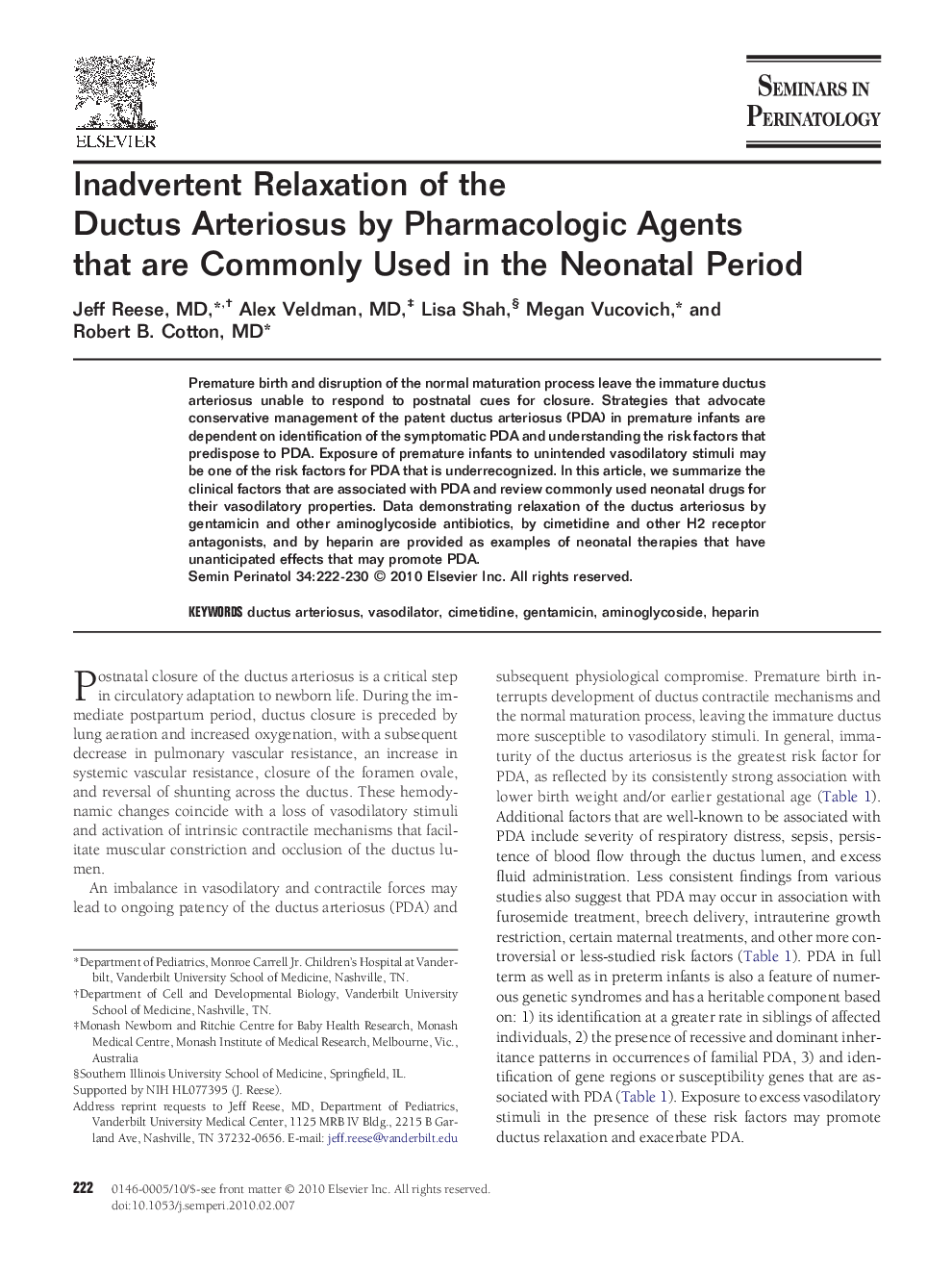| Article ID | Journal | Published Year | Pages | File Type |
|---|---|---|---|---|
| 3836449 | Seminars in Perinatology | 2010 | 9 Pages |
Premature birth and disruption of the normal maturation process leave the immature ductus arteriosus unable to respond to postnatal cues for closure. Strategies that advocate conservative management of the patent ductus arteriosus (PDA) in premature infants are dependent on identification of the symptomatic PDA and understanding the risk factors that predispose to PDA. Exposure of premature infants to unintended vasodilatory stimuli may be one of the risk factors for PDA that is underrecognized. In this article, we summarize the clinical factors that are associated with PDA and review commonly used neonatal drugs for their vasodilatory properties. Data demonstrating relaxation of the ductus arteriosus by gentamicin and other aminoglycoside antibiotics, by cimetidine and other H2 receptor antagonists, and by heparin are provided as examples of neonatal therapies that have unanticipated effects that may promote PDA.
